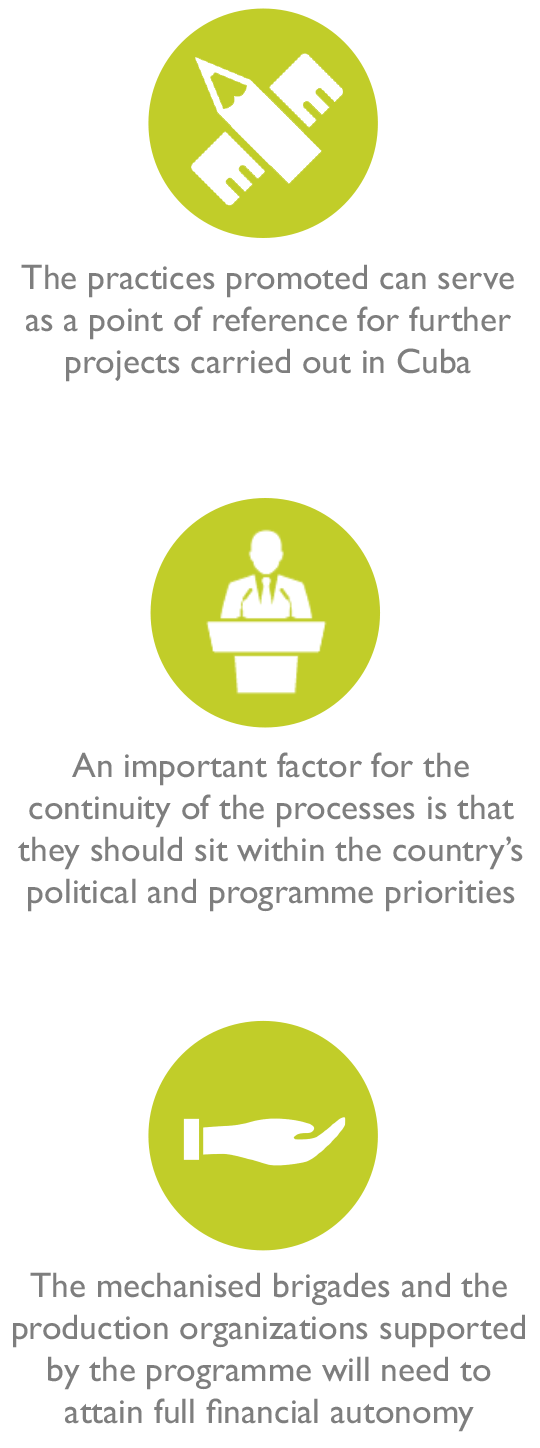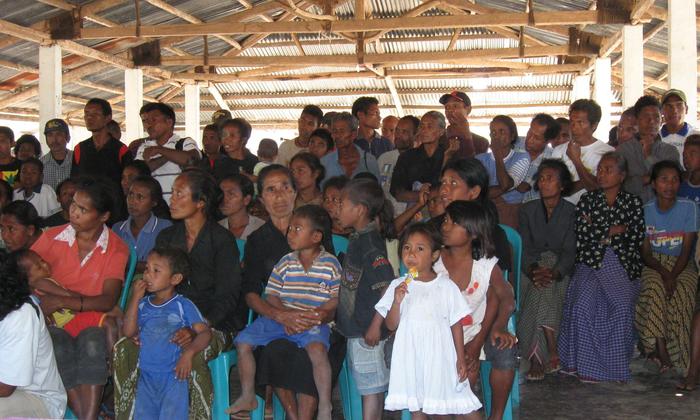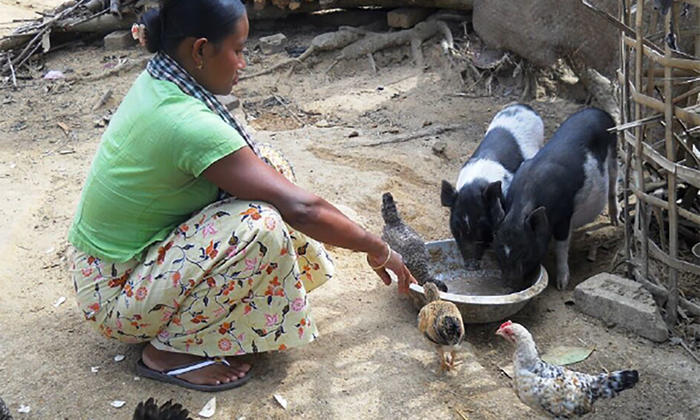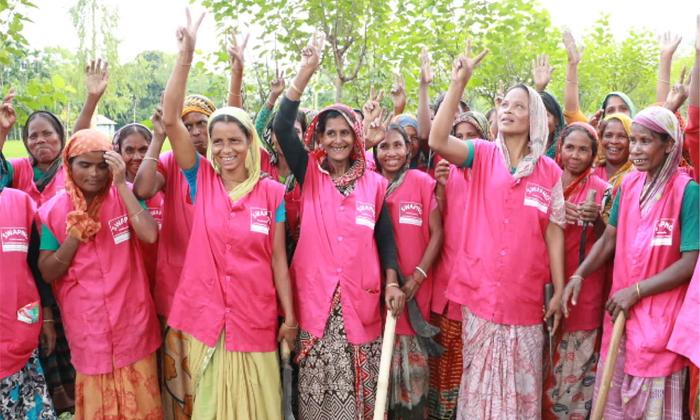The percentage of imported food in Cuba hit 80 per cent in 2007, reaching a value of US$1.8 billion. The increase in global food prices that year and the global financial crisis which started in 2008 exacerbated this situation even further
Case study
The private sector as an agent of local development in Cuba

SDGs ADDRESSED
This case study is based on lessons from the joint programme, Support for new decentralization initiatives and production stimulation in Cuba
Read more
Chapters
Project Partners



1. SUMMARY
The objective of the intervention was to promote the involvement of the private sector in municipal priorities as an agent of local development, supporting the new national initiatives on decentralization and production stimulation in Cuba.
The activities were centred on the agricultural and artisan sector to increase food production and reduce Cuba’s level of imports, which were identified as two of the national priorities. The main objectives were:
- To increase and diversify production in the private sector.
- To develop the management capacity and technical services of local government that support public-private cooperation.
- To increase the local population’s access to goods and services.
The aim of this case study is to showcase learning, results and practical examples in order to expand the available knowledge on development programmes that promote private sector activity as an instrument for local development and the alleviation of poverty.
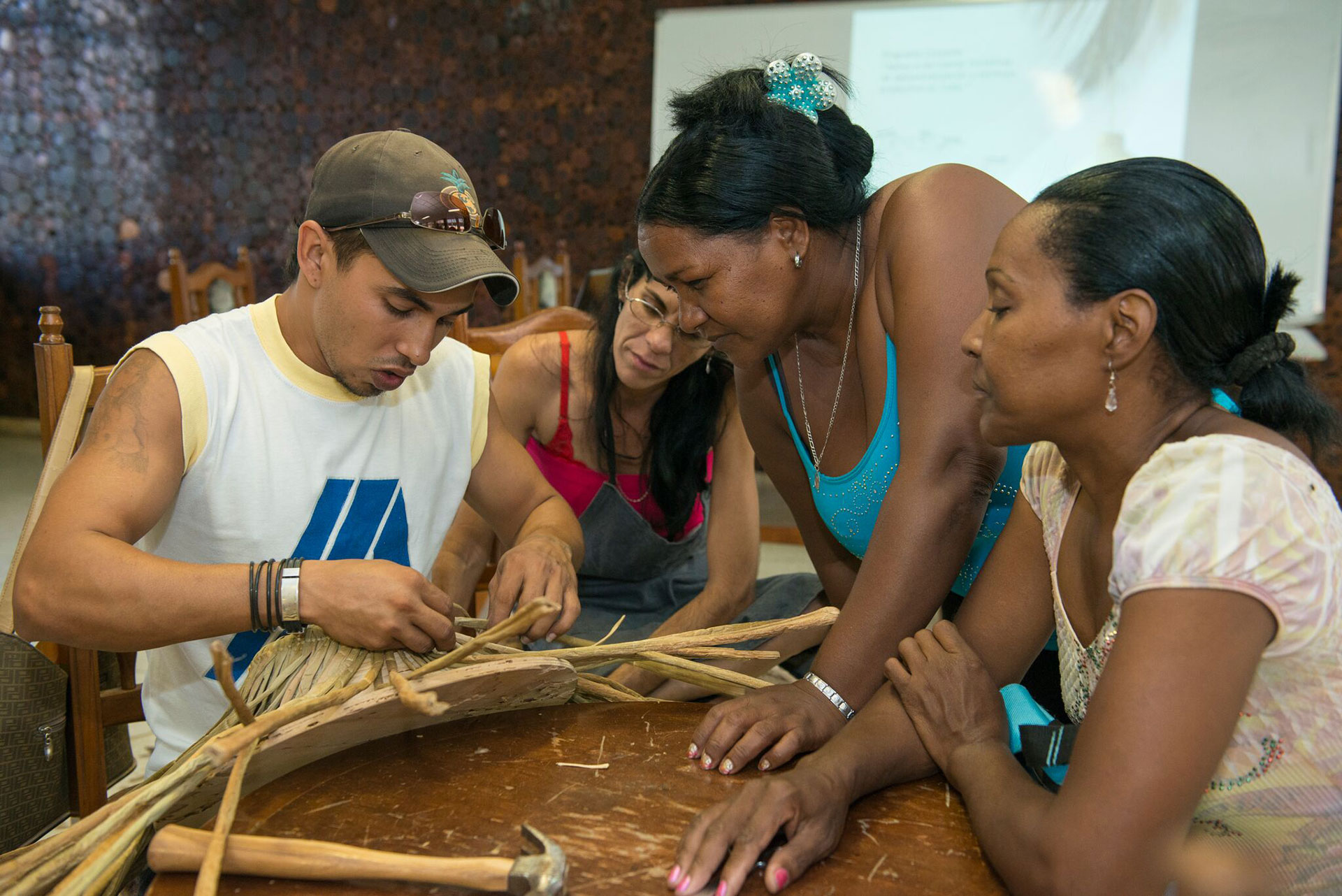
Businesses were revived through skills training and the introduction of new techniques
2. THE SITUATION
The Cuban economy was predominantly state-run for several decades. Governed by the National Economic Management and Planning System, the economy was essentially run on a centralised basis to determine priorities and allocation of state resources, in accordance with the country’s development strategy. However, over the last ten years Cuba’s economic structure has experienced a process of decapitalisation in several of its industrial sectors, particularly in agriculture. As a result, Cuba has been forced to increase imports to high levels, increasing the island’s external dependence.
What is particularly alarming is the proportion of imported food as a percentage of all the food consumed in Cuba, with imports reaching 80 per cent in 2007. Payments for food imports grew by 11 per cent per year between 2000 and 2006 at current prices, and exceeded the average annual growth figure of 6 per cent in physical terms. In 2007, the value of food imports was US$1.8 billion. The increase in global food prices that year and the global financial crisis which started in 2008 exacerbated this situation even further.
There are multiple causes of low food production One factor is the low use of agricultural land and low yields for the majority of crops due to the decapitalisation of the agricultural sector. Another factor is that the agricultural sector lacks adequate replacement of the workforce due to the unfavourable demographic process seen in the municipalities, where an increasingly ageing population is combined with negative migration. There is also a lack of interest from young people in training and working as farmers. Moreover, these municipalities do not have a clearly defined local economic development strategy and this situation is particularly critical in the municipalities affected by the closure of the sugar refineries between 2002 and 2004.
According to data from the National Office of Statistics and Information (ONEI), non-state employment recorded in Cuba over the last three decades was 15.7 per cent on average. This has been concentrated mainly in private agricultural activities (around 7.3 per cent of this employment is made up of independent farmers, with the majority associated with credit and service cooperatives). The non-state agricultural sector began to show signs of gradual growth as a result of the passing of the decree law granting the usufruct of unused lands to natural or legal persons, and its later modification to make its scope more flexible. Over the last four years the Cuban government has granted more than 1.5 million hectares to around 172,000 users throughout the country. The ONEI contends that the government views food production as a strategic task, since the island imports 80 per cent of the food consumed, with the annual bill of around US$2 billion representing a heavy financial burden. This scenario reached a turning point with the approval of the Guidelines on the Economic and Social Policy of the Party and the Revolution in April 2011, followed by their implementation and development into a new social and economic Cuban model, which includes strategic modifications for the country’s development.
3. STRATEGY
The programme intervened in five municipalities: La Palma in Pinar del Río, Martí in Matanzas, Yaguajay in Sancti Spíritus, Río Cauto in Granma and El Salvador in Guantánamo. A process of industrial reconversion had taken place in all of these municipalities following the closure of the agro-industrial sugar refining complexes, which had been the main economic activity in these communities. The intervention was incorporated into two existing national processes aimed at reducing the country’s dependence on food imports: the Realignment Process of the Agricultural Policy, led by the Ministry of Agriculture, and the Municipal Initiative for Local Development, led by the Ministry of Economy and Planning. The strategy was based on three main aspects:
- Increasing the production capacity in the municipalities, involving the private sector as an agent of local development, and organising farms and cooperatives by acquiring the necessary equipment and infrastructure.
- Strengthening the product marketing system, by focusing on improving collection centres, distribution and points of sale, and improving staff working conditions and the quality of the service offered to the communities in these areas.
- Skills training according to the municipalities’ work requirements.
Meanwhile, as part of the programme exit strategy local workshops were organised on the lessons learned during implementation and a “knowledge fair” was organised, in which programme stakeholders shared knowledge and ideas to improve their work.

More than two hundred artisans, mainly women, participated in the training programme “Por un producto mejor” (“For a better product”)
4. RESULTS AND IMPACT
One of the programme’s main achievements was to unite the state and non-state sectors, allowing the municipal development strategy to be drawn up with the participation of the private sector.
The five municipalities provided equipment, supplies, training courses and materials in addition to 35 services, to involve the private sector in the development of the municipalities’ production capacity. The Brigadas de Servicios Mecanizados (Mechanised Services Brigades) alone prepared almost 2,000 hectares of land in the five municipalities during the first six months. Meanwhile, work was carried out on plans for self-sufficiency in the five municipalities and the material capacities of the five municipal agricultural offices were strengthened in alliance with the Asociación Cubana de Técnicos Agrícolas y Forestales (ACTAF) (Cuban Association of Agricultural and Forestry Technicians) to enhance their management and coordination skills as regards meeting the population’s food requirements.
Twenty-one seed farms (complete with irrigation systems, tools and protection methods) were created and organised. In the case of La Palma, 450 hectares of land were prepared, while in Río Cauto more than double this amount of land was prepared. Sixty cooperatives were formed, improving production conditions for more than 5,830 producers, of whom 829 were women. This process created 600 new jobs. Equipment was purchased and advice was provided to create five mini-industrial plants for processing agricultural products. Resources were also provided for five artisan workshops to work on increasing product quality and to contribute towards improving working conditions.
At the same time, the production of goods and services by the private sector in the selected municipalities was increased and diversified, in line with national priorities for basic products such as rice, beans, meat and corn, which contribute to food security. A total of 36 entities (five storage centres, 26 points of sale and the five municipal agricultural markets) were strengthened, improving staff working conditions and quality of service. The five municipal agricultural offices also had their material capacities developed to improve their management.
Technical training was linked to the municipality’s economic priorities and activities. To achieve this, the “Construye tu futuro” (“Build your future”) campaign was developed nationally and in each municipality to raise youth awareness of agricultural careers. Courses on “teaching teachers” were promoted for technology and municipal development teachers, with support from the Ministry of Education and UNESCO. New training courses were started up depending on market needs. For example, the number of technical agricultural training centres was increased from six to ten in the five municipalities.
One of the programme’s main achievements was to unite the state and non-state sectors, allowing the municipal development strategy to be drawn up with the participation of the private sector
Training in food production and processing techniques was given to 11,224 producers (3,792 women), and 4,512 cooperative leaders and producers (1,697 women) were trained in local development management. The training programme “Por un producto mejor” (“For a better product”) was carried out by means of eight workshops, with the participation of 219 artisans (156 women). Quality and design criteria were made available at these meetings. Local groups for training and cooperative management were established in four municipalities, serving a total of 101 cooperatives. 1,060 local stakeholders were sensitised, while 259 managers and 2,848 cooperative members (510 women) were trained in the topics set out in the training programme.
The skills training had a very positive effect, since it resulted in an increase in production. For example, in the Hermes Rondón credit and services cooperative in the Río Cauto municipality, milk production prior to the intervention did not exceed 5,400 litres. The training received in the programme alone led to an increase in the organization’s milk production to 28,000 litres during the initial stage.

5. CHALLENGES
- One of the intervention’s biggest challenges is to consolidate the achievements and progress of the initiatives. Here the recommendation is to ensure that the local development management groups continue to function as spaces for dialogue and interinstitutional coordination. Within this framework, the municipal offices of the Ministry for Economy and Planning and the Ministry of Agriculture, under the supervision of the Municipal Administration Council, could take the lead on the monitoring of development plans and provision of services and production respectively.
- Diversifying the local economy beyond primary production. Here the recommendation is to continue supporting industrial transformation processes which can add value to agricultural products and contribute towards stimulating a local service economy.
- A further recommendation linked to the previous point is to continue support for the artisan sector to improve the production and marketing of their products. There is a particular need to support this sector in the search for niche markets where Cuban handicrafts may have a comparative advantage and can be competitive in the international market.
- In programmes with multiple stakeholders it is necessary to set up a joint administrative agenda defining shared channels and procedures in order to reduce costs and manage the project in the most efficient way. There needs to be a guarantee from the outset that programmes have a well-defined communication strategy between the stakeholders, which affords all of the recipients a deeper understanding than is provided by occasional promotional events. At the same time, the programme’s national coordinating body must be equipped with effective mechanisms to insist that each of the agencies fulfil its agreed commitments in order to guarantee the success of the programmes.
- Some of the programme’s key institutions took on new roles and functions when the new political strategies for Cuba’s development were established. This national process meant that some decision-making and certain programme processes were more complex and took longer than planned.
- Staff changes in medium and long-term initiatives (more than two years) cause information voids and long adaptation processes. In order to guarantee the sustainability of good practices and organizational methods that have been set up, mechanisms must be devised to avoid the loss of human resources and technicians who have been trained during the programme process.
6. LESSONS LEARNED
- The programme constitutes a successful example of the capacity and impact of the United Nations system when its agencies work in a coordinated multidimensional way. Each agency contributed its own knowledge and experience. However, in order for the intervention to be successful it is very important for the roles of the different agencies to be made clear and for agreements to be established around the common objectives. This will provide mutual learning for the agencies and linked institutions. It is important to develop a communication strategy right from the beginning. Efficient and effective mechanisms for the purchase and distribution of resources must be considered from the outset in order to satisfy the programme’s requirements.
- A complex, multi-sector programme targeted at the local setting requires more time to implement and an advance period of preparation. It is advisable to concentrate the investment on the first stages/ years in order to stimulate the processes and achieve results.
- The private sector took part as an additional stakeholder in the programme implementation, in coordination with local government organizations. This experience demonstrated that the private sector can be a stakeholder in development initiatives, contributing knowledge and resources which public stakeholders do not have. Public-private alliances combine efforts and are more successful.
- Facilitating the training of local stakeholders in the identification of endogenous resources and the design of local economic development projects proved key to achieving the objectives. This training allows stakeholders and beneficiaries to understand the importance, impact and benefits of the programmes. It is important to set up a process to systematise experiences and lessons learned during the implementation of a programme, in order to learn from the successes and mistakes.
- The diversification of raw materials for the production of handicrafts, to promote the substitution of imports by developing thread with natural fibres using locally available natural resources, was a good choice for improving the services of the private sector. Businesses are revived by skills training and the introduction of new techniques, such as training for artisans on weaving with natural fibres.
- In order to ensure greater ownership and sustainability, it is important for development programmes to be linked with or complement ongoing national strategies or established public policies.
- Every development experience should have a bottom-up approach, in which the development of the various interventions is discussed, validated and implemented with the community. Priority must be given to the local level in order to achieve greater levels of impact, ownership and sustainability, by linking communities, local partners and regional advisers in the planning, monitoring and evaluation processes for the activities.
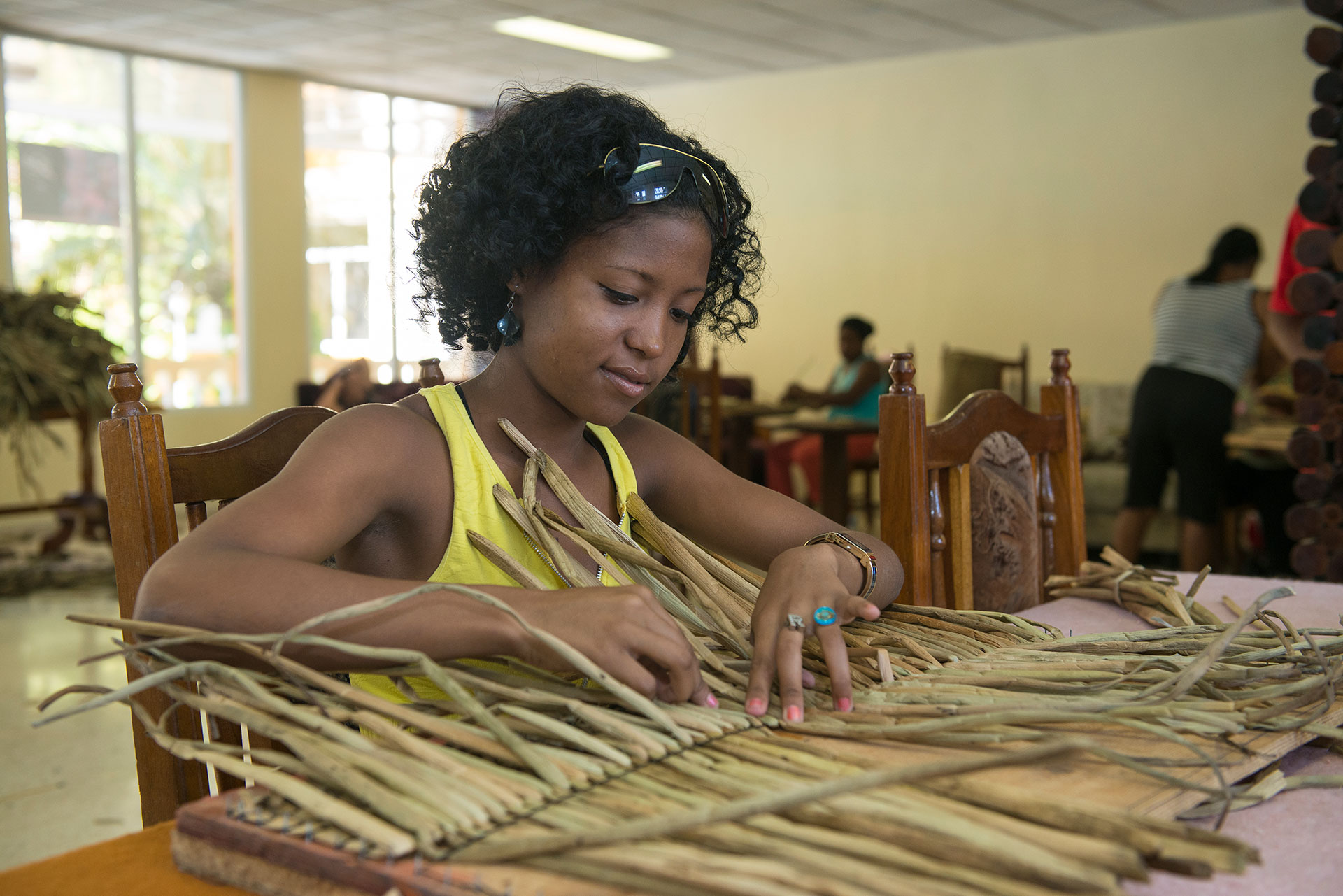
The diversification of raw materials for the production of handicrafts was a good choice for improving the services of the private sector
7. SUSTAINABILITY AND POTENTIAL FOR REPLICATION
The practices promoted can serve as a point of reference for further projects carried out in Cuba, and are also applicable to other countries. One of the main challenges for the sustainability of the programme is the need to continue consolidating results and to ensure that the working dynamics are not lost at the end of the project life cycle. An important factor for the continuity of the processes is that they should sit within the country’s political and programme priorities. The sustainability of the municipal inter-sector work groups also benefits from the fact that these groups consist entirely of members of staff from local or national Cuban public institutions. However, support is required for full consolidation of the local capacities that have been strengthened.
Although all of the investment planned within the programme framework was covered by the National Plan for the Economy, ensuring that there would be financial provision for operation and maintenance, the mechanised brigades and the production organizations supported by the programme will need to attain full financial autonomy. Lastly, the increased access to credit for non-state production organizations and their access to non-state marketing channels will have a significant effect on their sustainability and profitability. For future interventions, it would be beneficial to carry out an analysis of the purchasing processes, customs clearance and delivery of supplies to end recipients, to see if there is any flexibility to speed up imports and delivery of donations from international cooperation.
